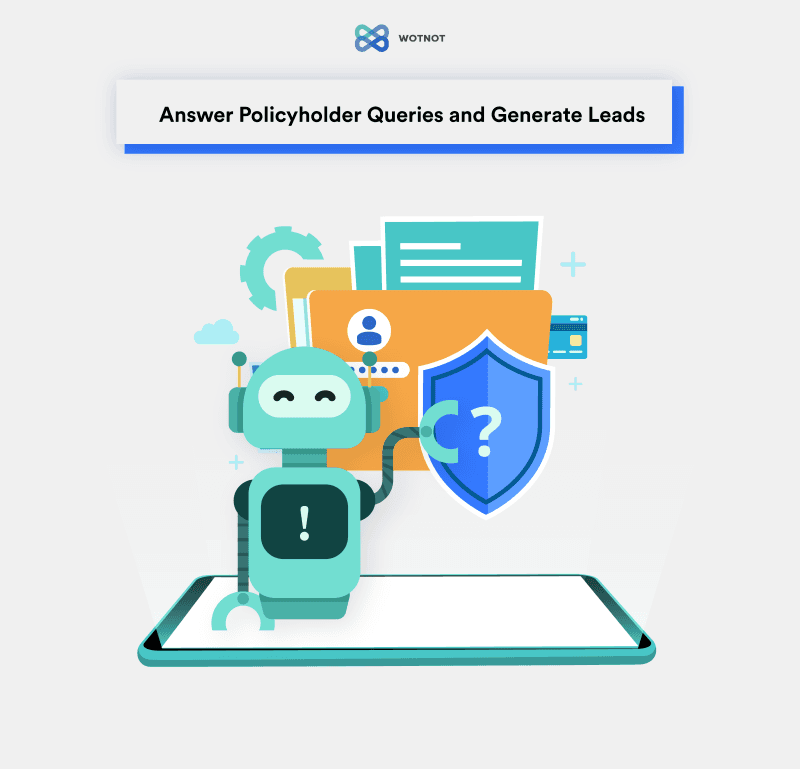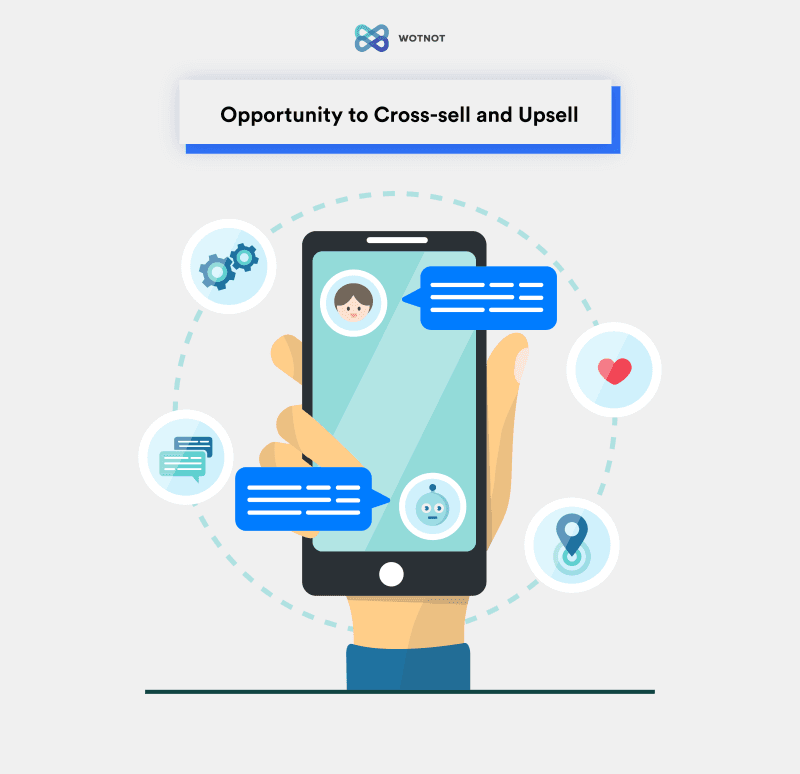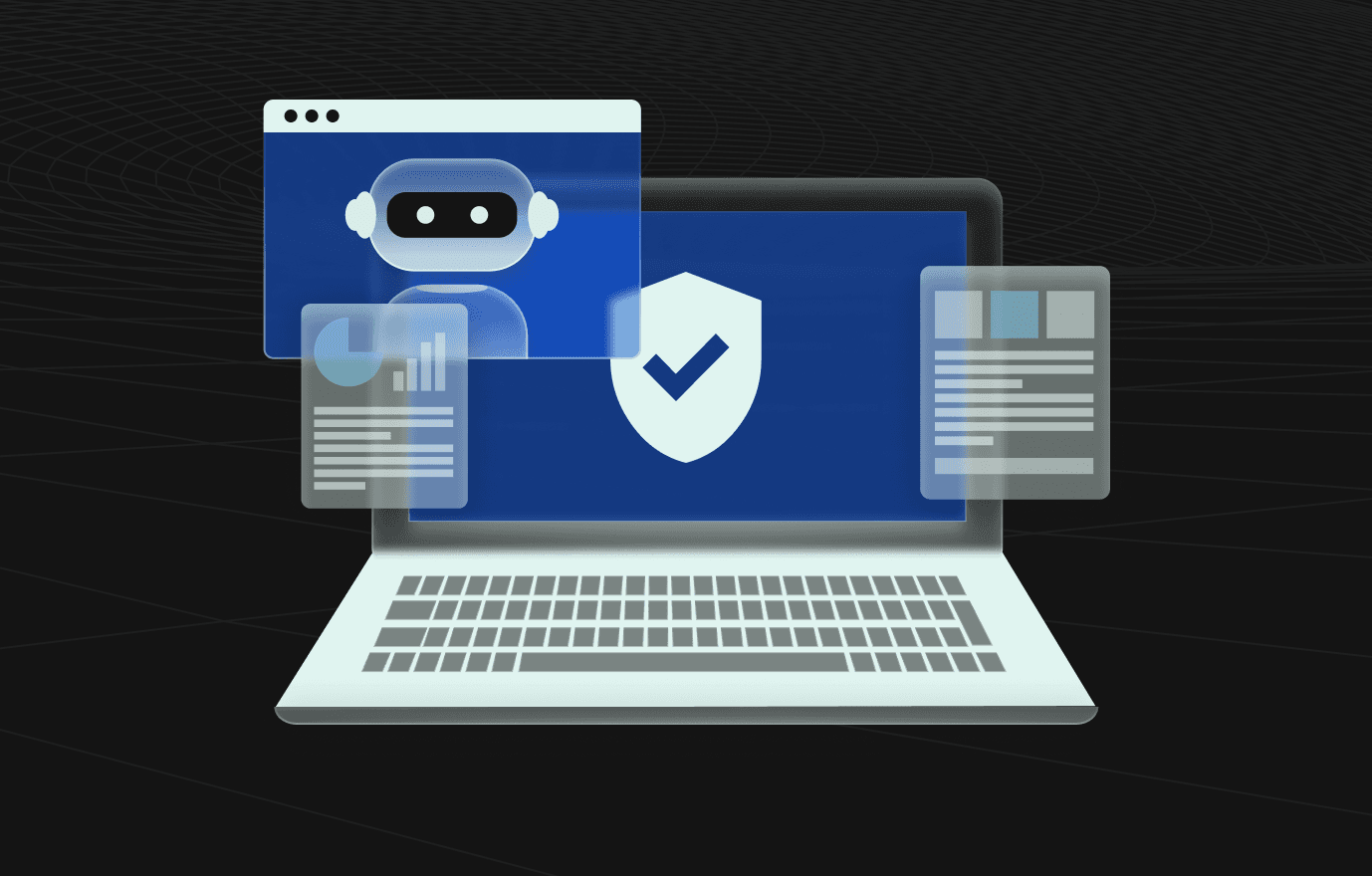Chatbot /
4 Min read
9 Best Use Cases of Insurance Chatbot
September 6, 2022
Hardik Makadia
Co-founder & CEO, WotNot
As soon as we hear the word ‘insurance’, we picture endless policies, legal procedures, and ample paperwork.
But thanks to new technological frontiers, the insurance industry looks appealing.
With changing buying patterns and the need for transparency, consumers are opting for digital means to buy policies, read reviews, compare products, and whatnot.
Leading this digital transformation in insurance are chatbots. Research suggests that as many as 44% of consumers are willing to buy insurance claims on chatbots.
But, even with this high demand, chatbot use cases in insurance are significantly unexplored. Companies are still understanding the tech, assessing the chatbot pricing, and figuring out how to apply chatbot features to the insurance industry.
If you’re also wondering how chatbots can help insurance companies, you’re at the right place. In the following article, you get a deeper understanding of how you can use chatbots for insurance.
Insurance Chatbot Use Cases
1. Answer Policyholder Queries and Generate Leads

A potential customer has a lot of questions about insurance policies, and rightfully so. Before spending their money, they need to have a holistic view of the policy options, terms and conditions, and claims processes.
Naturally, they would go looking for answers from agents who can guide them through different policies and products and suggest what would be ideal for them.
Instead, your AI chatbot can act as the first line of agents. Providing answers to policyholders is a leading insurance chatbot use case. Bots can be fed with the information on companies' insurance policies as common issues and integrate the same with an insurance knowledge base.
This way, all basic queries of customers are taken care of and your agents are relieved of rudimentary tasks. You’re also assured that all the information that customers get is reliable and accurate. How else will it help?
You can proactively reach out to every single customer and reduce their waiting time to get in touch with an agent.
Increase site conversions and provide a digital avenue for online customers to get to know your policies and products.
Scale support using FAQ bots and significantly reduce support costs.
An interesting insurance chatbot example is that of Smart sure. Smart Sure provides flexible insurance protection for all home appliances and wanted to scale its website engagement and increase its leads. It deployed a WotNot chatbot that addressed the sales queries and also covered broader aspects of its customer support. As a result, Smart sure was able to generate 248 SQL and reduce the response time by 83%.
2. Get Personalized Quotes
Once your customers have all the necessary information at their disposal, the next ideal step would be to purchase the policies. However, that’s where it gets tricky with insurance. Everyone will have a different requirement which is why insurance extensively relies on customization.
When a customer interacts with an insurance agent, they expect agents to take into consideration their history and profile before suggesting a plan that is best suitable for them.
Here, a significant chatbot use case in insurance comes into play. The bot can ask questions about the customer’s needs and leverage Natural Language Understanding (NLU) to match insurance products based on customer input.
Insurance chatbots collect information about the finances, properties, vehicles, previous policies, and current status to provide advice on suggested plans and insurance claims. They can also push promotions and upsell and cross-sell policies at the right time.
This data further helps insurance agents to get a better context as to what the customer is looking for and what products can close sales.
3. Receive and Process Claims

The process of receiving and processing claims can take a lot of time in insurance which ends up frustrating the customers. They have to wait to get in touch with a representative to fill out a form and send documents. Considering the time and effort that goes into claiming, this should be one of the first activities you should consider automating to improve customer service in the insurance sector.
Conventionally, claims processing requires agents to manually gather and transfer information from multiple documents. With this system, it's difficult to scale and bring speed to the process.
Insurance and Finance Chatbots can considerably change the outlook of receiving and processing claims. Whenever a customer wants to file a claim, they can evaluate it instantly and calculate the reimbursement amount.
For damage assessment, they can send pdf files, images, or videos on the chat interface itself which the bot can quickly forward for processing. Customers value speed and with bots they get it.
There can come a time when many customers request claims at once. Say in case of a natural disaster or a major fire. This sudden hike in demand can overload and subsequently exhaust your team. At such times, you can automate one of the most time-consuming activities in insurance, i.e, processing claims. With this, you get the time and effort to handle the influx and process claims for a large number of customers.
4. Facilitate Premium Payments
Over the years, we’ve witnessed numerous channels to make and receive payments online and chatbots are one of them. And customers are slowly embracing the idea of chatbots as a payment medium.
For insurance companies, this is good news. Because a disruptive payment solution is just what insurance companies need considering that premium payment is an ongoing activity. You can seamlessly set up payment services on chatbots through third-party or custom payment integrations.
With back-end information at the bots’ disposal, a chatbot can reach out proactively to policyholders for payment reminders before they contact the insurance company themselves. Bots can also help policyholders find the relevant channel through which they can renew their policy and the information required to make the payment.
5. Provide Advice and Information
While insurance is something that customers need to buy, it isn’t necessarily something they want to buy. Inquiry is the first point of contact in insurance. It’s essential for companies to take an educational-first approach to get prospects on board with the idea of paying premiums and buying insurance products.
And that’s what your typical insurance salesperson does for nurturing leads. They educate and make information accessible. Even if the policyholders don’t end up buying your product, it eases them to the idea through a two-way conversation between an agent and the prospect.
And while it’s ideal, the question still remains, “How do I scale?”
You say hello to insurance chatbot automation. Another chatbot use case in insurance is that it can address all the challenges potential customers face with the lack of information. Once you deploy bots, your support goes on auto-pilot.
Every customer that wants quick answers to insurance-related questions can get them on chatbots. You can also program your chatbots to provide simplified answers to complex insurance questions. The information is available round the clock and instantly.
6. Opportunity to Cross-sell and Upsell

Regardless of the industry, there’s always an opportunity to upsell and cross-sell. Think of your insurance chatbot as an insurance agent. After they are done selling home insurance or car insurance, they can pitch other products like life insurance or health insurance, etc. But they only do that after they’ve gauged the spending capacity and the requirements of the customer instead of blindly selling them other products.
Similarly, if your insurance chatbot can give personalized quotes and provide advice and information, they already have a basic outlook of the customer. But to upsell and cross-sell, you can also build your chatbot flow for each product and suggest other policies based on previous purchases and product interests.
You can integrate your chatbot with the CRM and learning models that help AI guess what is the most appealing product for the customer. With the relevant surf history and purchase history, it can accurately guess what other policies the customer would be interested in buying.
Consider the following insurance chatbot example: once the customer completes a flow for car insurance, the bot can suggest checking out policies for home insurance, travel insurance, etc. Similarly, a health insurance chatbot can also suggest different policy options in long-term disability insurance, life insurance, and the premium amount for each product, etc.
On WotNot, it’s easy to branch out the flow, based on different conditions on the bot-builder. Once you do that, the bot can seamlessly upsell and cross-sell different insurance policies.
7. Provide Account Support
Customer support has become quite the competitive edge in the insurance industry. We’re not just talking about support in general. We’re talking about personalized support. The existing customers that have an account with you will have different questions as compared to a potential customer who’s still learning about the product.
The former would have questions about their existing policies, customer feedback, premium deadlines, etc. In this case, your one-for-all support approach will take a backseat while your agents will take extra efforts to access the customer profile to give them answers.
Instead, you can integrate your AI chatbot with your internal system. As soon as the customer provides their customer ID or number, the bot can immediately access their account and fetch answers such as:
Information about refunds and cancellations about their current policies
Report errors
Check the next premium date or the expiry date
Renew policies and current plans
Update details on customer profile, like a change of address or nominee, etc.
You can also scale support through an insurance chatbot across channels and consolidate chats under a single platform. The best part about chatbots is their flexibility. You can always program it in a way where customers can quickly request a live agent in case there’s a complex query that requires human assistance.
8. Receive Feedback and Complaints
Feedback is something that every business wants but not every customer wants to give. It’s challenging to convince customers to provide genuine feedback. An important insurance chatbot use case is that it helps you collect customer feedback while they’re on the chat interface itself.
Moreover, you want to know how your insurance chatbot performed and whether it fulfilled its objective. Customer feedback on chatbots can help you monitor the bot performance and gives you an idea of where to make improvements and minor tweaks.
Insurance chatbots are more user-friendly in extracting feedback after the chat. You can include chatbot features like:
CSAT rating
Like/Dislike buttons
Short surveys
Likert scales
Written feedback via text
Chatbots for insurance also allow users to raise complaint tickets. All you have to do is integrate your chatbot into your ticket system. Once a customer raises a ticket, it automatically gets added to your system where your agent can get quick notification of a customer problem and get on to solving the issue.
9. Fraud Detection
The latest insurance chatbot use case you can implement is fraud detection. Frauds are widely prevalent in the insurance industry. But thanks to measures of fraud detection, insurers can reduce the number of frauds with stringent checking and analysis.
Bots help by speeding up claims processing. Customers can submit the first notice of loss (FNOL) by following chatbot instructions. They then direct the consumers to take pictures and videos of the damage which gives potential fraudsters less time to change data. Only when bots cross-check the damage, they notify the bank or the agents for the next process.
Finishing Thoughts
As chatbots evolve with each day, the insurance industry will keep getting new use cases. But it’s just the beginning. As AI and Machine Learning become mainstream, the insurance industry will witness numerous functions and activities it can automate via advanced chatbot technology.
However, you’ll find many real-life insurance chatbot examples even today. It shows that firms are already implementing at least some form of chatbot solution in the insurance industry. If you want to do the same, you can sign up for WotNot and build your personalized insurance chatbot today.
ABOUT AUTHOR
Hardik Makadia
Co-founder & CEO, WotNot
Hardik leads the company with a focus on sales, innovation, and customer-centric solutions. Passionate about problem-solving, he drives business growth by delivering impactful and scalable solutions for clients.




